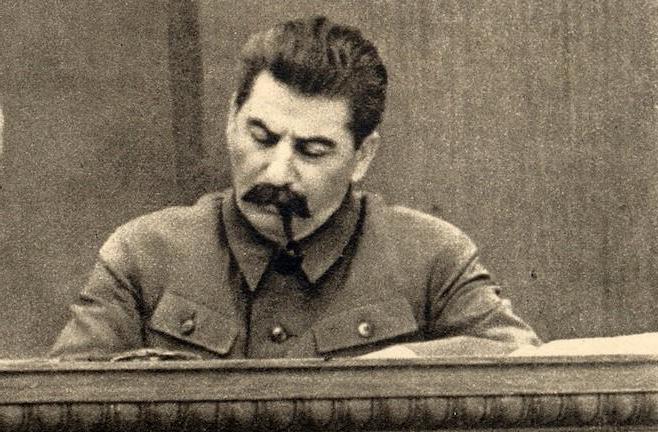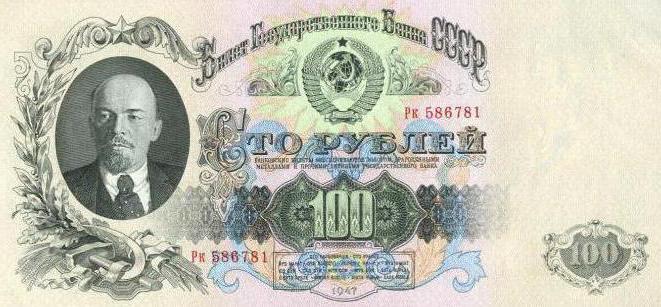The 1947 monetary reform carried out in the USSR was a tough measure to restore the country's economy after World War II. Many states experienced such reforms in the postwar years. The main reason for this was the huge money supply issued to cover military spending.
Consequences of war
The Second World War caused tremendous damage to both the USSR and many other participating countries. In addition to enormous human losses, the damage was done to the state as a whole.
During the war, about 32,000 industrial enterprises, nearly one hundred thousand agricultural enterprises, more than 4000 railway stations and 60,000 tracks were destroyed. Hospitals and libraries, theaters and museums, schools and universities were destroyed.
The country's infrastructure was almost completely destroyed, millions of Soviet citizens were left without a roof over their heads, more than 30% of national wealth was destroyed, food supplies were almost exhausted. The country was physically and morally exhausted.
Reasons for reform
The restoration of a country that fell into decay after the war required significant transformations in many areas of life. One of these transformations was the monetary reform carried out in the USSR in 1947. There were many reasons for the reform:
- In wartime, a large number of banknotes were issued. This was due to huge military expenditures. As a result, at the end of the war there were four times more money in circulation than before. In the post-war period, such an amount of money was not required and threatened to depreciate the ruble.
- A sufficient number of counterfeit notes, which were issued by the Nazis, revolved in circulation. These bills should have been withdrawn during the 1947 monetary reform.
- Cards were introduced in the USSR aimed at combating the shortage of goods. With the help of cards, the majority of food and non-food products were distributed among the population. The abolition of the coupon system made it possible to establish fixed prices for consumer goods.
- Significantly increased the number of speculators who made a fortune during the war. The establishment of fixed prices was also aimed at combating the speculative element.
The Goals of the 1947 Monetary Reform
The decree "On the implementation of monetary reform and the abolition of cards for food and industrial goods" was the basis for the beginning of the transformation. The main goal of the 1947 monetary reform was to eliminate the consequences of the past war. It should be noted that similar reforms were carried out in most countries participating in the war.
The task of the reform was to promptly remove old-type banknotes that were excessively issued during the war and exchange them for new ones. According to the terms of the monetary reform of 1947, rubles replaced the chervonets.
The provisions described in the decree also stipulated the procedure for canceling cards. The presence of a coupon for a product gave citizens the right to purchase a particular product. The number of coupons was limited; accordingly, not everyone could afford to purchase the desired product. This gave impetus to the spread of speculation. People who do not have a card for the desired product could buy it from speculators at an increased price. The monetary reform of 1947 established uniform fixed prices for all groups of goods.
How did the reform go?
Reform planning began a year earlier. However, in connection with the post-war famine, it had to be postponed. The start of the events was scheduled for December 16th. It was required to complete the reform as soon as possible; an end date was set two weeks later, on December 29th.
As a form of transformation, denomination was chosen. In short, monetary reform in 1947 came down to a change in the value of banknotes. The percentage of denomination was 10: 1, that is, ten old chervonets were equal to one new ruble. However, the pricing procedure, various payments and salaries during recalculation did not change, despite the reduction in prices. In this regard, many historians do not consider this reform a denomination, agreeing that it was of a confiscatory nature.
On December 11, the Ministry of Internal Affairs departments received packages, which were opened on the 14th of the same month to the heads of savings banks and other departments of the financial structure. These packages outlined the essence of the monetary reform of 1947, and also contained detailed instructions on the exchange of financial resources of the population. The instruction concerned cash, as well as deposits and bonds.
Money exchange
The confiscatory nature of the monetary reform of 1947 was confirmed by one of the points of the resolution. This paragraph stated that the exchange of monetary funds of the population should have been carried out in such a way as to not only withdraw excess cash from circulation, but also to eliminate the accumulation of speculators. However, savings were not only among people who dishonestly made their fortunes during the war years, but also among citizens who had accumulated their savings for many years. The same can be said of those regions of the USSR that were not affected by the war, where favorable conditions for trade were preserved. But it was prudently silent about this “nuance”.
Cash paper money changed at the box office of the USSR State Bank at a rate of ten to one, for deposits the exchange rate was different. It should be noted that penny coins were not exchanged and remained in circulation.
Card Cancellation
The card system has existed in the USSR since the creation of the state. It was canceled several times and resumed. The card system existed in the country from 1917 to 1921, from 1931 to 1935. The next introduction of coupons for goods occurred in the war years. It should be noted that at that time many states that took part in hostilities switched to the card system. The abolition of cards was part of the monetary reform measures of 1947 in the USSR. But before it was necessary to regulate pricing policy. At the time of the reform, market prices were significantly different from unit prices and exceeded them by about ten times. The reform decree described a new pricing procedure, which was supposed to reduce the difference in market and ration prices of goods. The prices of bread, cereals, pasta and beer, it was decided to reduce by 10-12% in comparison with rations, while prices for fruits, milk, eggs, tea, fabrics and clothing needed to be increased. The retail value of meat, fish products, confectionery, vegetables, tobacco products, vodka remained at the level of existing ration prices.
Bonds
Monetary reform in the USSR in 1947 also affected bonds that were in circulation at that time. A bond is a guarantee paper of a loan, providing the owner with a loan from the borrower on time. The borrower or issuer in this case is the state.
During the period of the USSR’s participation in hostilities, when government expenditures for military needs increased sharply, State military bonds were issued in the total amount of 81 billion rubles. The amount of all domestic loans amounted to about 50 billion rubles. Thus, by the time of the monetary reform in 1947, the state owed the population more than 130 billion rubles.
The bonds were also exchangeable. Conversion measures consisted in exchanging old interest-bearing loans for new ones at a rate of three to one, winning bonds - at a rate of five to one. That is, one new ruble in bonds was equal to three or five old rubles, respectively. As a result of such an exchange, the state’s internal debt to the population decreased by an average of four times.
Deposits
The exchange rate of household savings varied depending on the amount of accumulation. If the size of the contribution did not reach three thousand, the exchange was made on a one-to-one basis. Deposits from three to ten thousand - three to two. If the deposit amount exceeded 10,000 rubles, then 3 old rubles were equated to one new.
That is, the greater the amount of savings, the more the investor lost. In this regard, when rumors of the upcoming reform became more obvious, kilometer lines lined up in savings banks. People with large deposits sought to withdraw money. They split their large contributions into smaller ones, reorganizing them into third parties.
Last victim
Talk of impending reform quickly spread among the population. Information about the denomination and confiscation of funds caused a real stir. People bought absolutely everything from stores in order to at least partially invest money, which would soon become “candy wrappers”. At that time, even the product that had been gathering dust on shelves for years was sold. In savings banks the same thing happened. Also, citizens sought in advance to make various payments, for example utility bills.

As was said by IV Stalin, the “last sacrifice” was required to restore the state. Moreover, the state promised to take up the bulk of the costs. However, in reality it turned out differently. The most severe blow was inflicted on villagers, the most unprotected layer of the population. The 1947 monetary reform needed to be carried out in an incredibly tight time frame. If for remote sparsely populated territories this period was two weeks, then the inhabitants of the central regions had to manage to exchange money for a week. And if the townspeople had the opportunity to make an expensive purchase or open a deposit, then many villagers simply did not have time to get to the nearest savings bank. In addition, a separate part of the citizens did not dare to show their real savings, fearing unnecessary questions and persecution. In principle, the government was counting on this. Of the 74 billion rubles in circulation, no more than a quarter, over 25 billion, presented for exchange.

Consequences of the reform
As a result of the monetary reform of 1947, the Soviet Union managed to avoid the depreciation of the ruble, the surplus of notes issued during the war years was eliminated. Thanks to the recalculation, the costs of which were shouldered by the population, the State Bank managed to collect a considerable amount. This money was used to restore the post-war country. The cancellation of cards ensured a decrease in market prices for many groups of goods and significantly reduced the number of speculators.
It is generally recognized that the reform, like many other Stalinist introductions, was coercive and tough. However, it is worth recognizing that these measures were forced and necessary for the restoration of the Soviet economy.